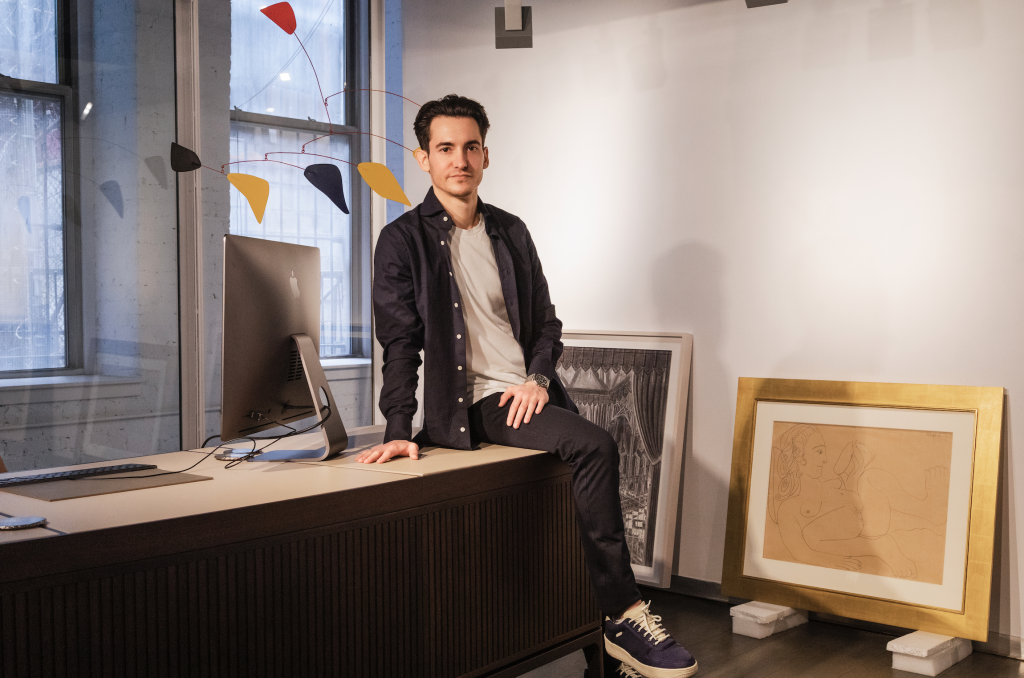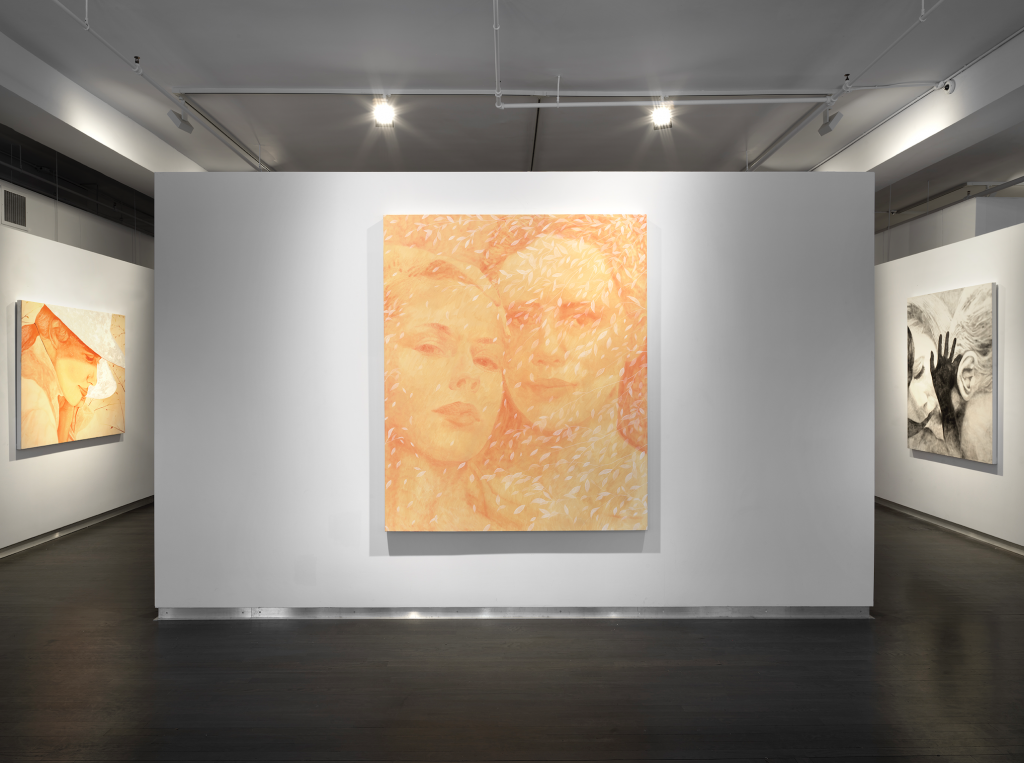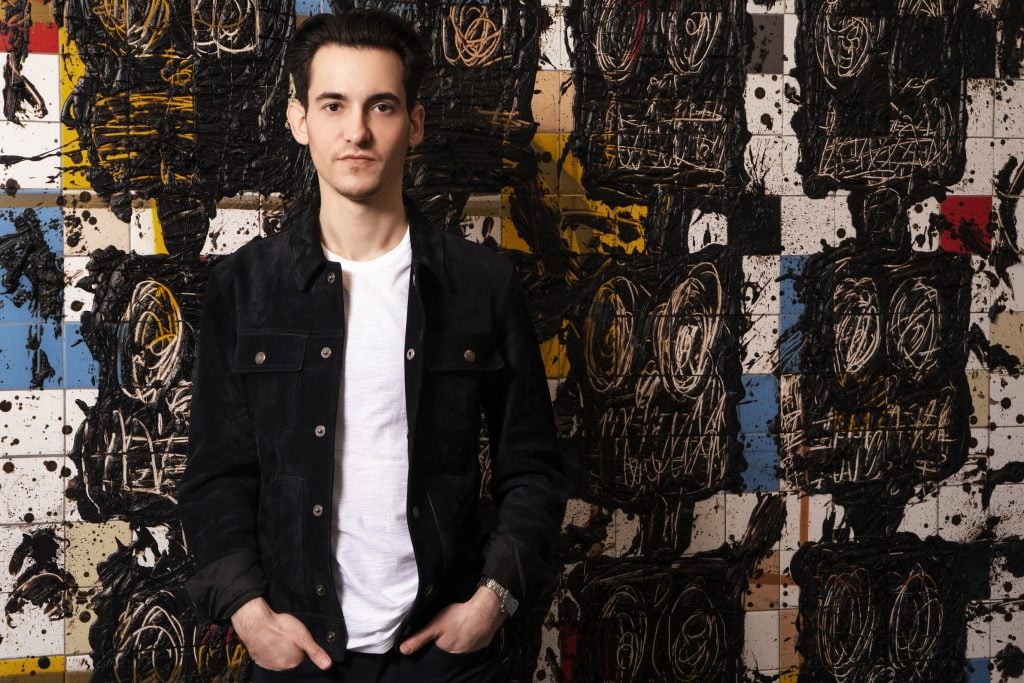Valuations
Soho Gallerist Leo Rogath Treasures Emerging Artists, a Watch He Bought for Sentimental Reasons, and His Dog Named ‘Maybe’
We asked the founder of Prince & Wooster about the things he values most—in art and in life.

We asked the founder of Prince & Wooster about the things he values most—in art and in life.

Katie White

So much of the art world orbits around questions of value, not only in terms of appraisals and price tags, but also: What is worthy of your time in These Times, as well as your energy, your attention, and yes, your hard-earned cash?
What is the math that you do to determine something’s meaning and worth? What moves you? What enriches your life? In this new series, we’re asking individuals from the art world and beyond about the valuations that they make at a personal level.
Leo Rogath might be a contemporary dealer, but he has a passion for art history. These dual passions present no contradiction in terms for Rogath; he grew up the child of notable collectors David and Leslee Rogath, surrounded by world-class artworks, and from a young age he learned to see artistic and aesthetic conversations happening across generations and cities.
Rogath, who is 30, is now taking this perspective to Prince & Wooster, a Soho gallery he founded that pairs the work of emerging artists with his family’s esteemed permanent collection, built over 40 years. That is where artists ranging from Henri Matisse, Ed Ruscha, and Andy Warhol to contemporary voices including Rashid Johnson, Amoako Boafo, and Ivy Haldeman are featured.
The gallery is the next step in a career Rogath has spent fostering sales, museum loans, and client relations. He cut his teeth professionally at Christie’s, working in postwar and contemporary auctions and private sales.
For Rogath, fostering a dialogue between generations of artists has become his life’s calling. This ethos is manifest in the physicality of the gallery; the 10,000-square-foot Soho space is located in a New York City landmark, the same building that houses the Dia Art Foundation’s Earth Room. The gallery space was designed in the late ‘80s by architects Laurie Hawkinson and Henry Smith-Miller. Currently, the gallery is hosting “Willows Weep” a solo exhibition of paintings by emerging painter Emily Ferguson (on view through June 25).
When Rogath steps out of the gallery to grab a fancy coffee or chat with a friend, it is often with his beloved pooch, Maybe. Recently we chatted with Rogath about what he values in art and life—and why.
What is the last thing that you splurged on?
1. A watch that was sentimental to me. 2. A small Elad Lassry that was in the first sale I catalogued at Christie’s from Melva Bucksbaum’s collection (it was about $1,600). 3. Caffeine—recently tried Magic Mind and it was great.
What is something that you’re saving up for?
Always more art.

Leo Rogath with his dog Maybe.
What would you buy if you found $100?
I would donate it to the Tate Acquisition Committee.
What makes you feel like a million bucks?
I feel the best around my loved ones and the people closest to me. Working through life and ideas with the people you care about surely makes you feel like a million bucks.
What do you think is your greatest asset?
My friends and family.
What do you most value in a work of art?
The visceral emotion and intellectual insight that can only be elicited from a great painting or sculpture. The historical perspective. How artists engage with those who preceded them and laid the groundwork for the next generations.

Installation view “Emily Ferguson: Willows Weep” (2023). Courtesy of Prince & Wooster.
Who is an emerging artist worthy of everyone’s attention?
Emily Ferguson and Yuan Fang: artists behind the current and previous shows that I hosted at Prince & Wooster. I only host shows with artists who I believe in enough to collect and share with collector friends of mine. In “Willows Weep” I think people will see that Emily’s work is uniquely her own. At 25, you can already identify and feel her style across multiple series. The work creates a surreal feeling, while also being firmly planted in reality…the figures often feel as if they’re floating in space but grounded in their own world which Emily expertly conveys. These references are pulled from Emily’s personal visions, history, and the world around us now. She has an instantly recognizable feel and signature style which is not often seen so early in an artist’s career.
Who is an overlooked artist who hasn’t yet gotten their due?
Nathan Ritterpusch. Nathan’s take on vintage Hollywood imagery is unlike any other that I’ve seen. His wet-on-wet technique, blending the imagery, creates a glossy but textured surface. Nathan first builds and layers imagery in Photoshop to create a digital study; this practice further brings in a contemporary technology and feel to the historical imagery. He then entirely renders them by hand with oil. This interplay is special to me, constantly blending mastery of centuries-old technique and modern tech.
What, in your estimation, is the most overrated thing in the art world?
Buying art you don’t love or believe in because it’s what others are doing. You always want to live with what you love. It’s a win/win. There’s no downside when you collect what you love.
What is your most treasured possession?
A watch that I bought for myself with the proceeds from my first sale while working at Christie’s.

Leo Rogath standing in front of a Rashid Johnson in his collection.
What’s been your best investment?
My time spent with artists, learning what makes them tick and inspires them to create what’s important to them. Buying several pieces by Rashid Johnson in 2016 and Amoako Boafo in 2019, as well as many other wonderful living artists.
What is something small that means the world to you?
My dog, named Maybe.
What’s not worth the hype?
Collecting with your ears and not your eyes—something that has been more common in the past 10 years than in years prior.
What do you believe is a worthy cause?
Using art to encourage mental health awareness—along with awareness of other important causes.
What do you aspire to?
I aspire to create a space where people can appreciate art that’s being made now in the context of historical work. The dialogue is often fascinating and entertaining, and enlightening.